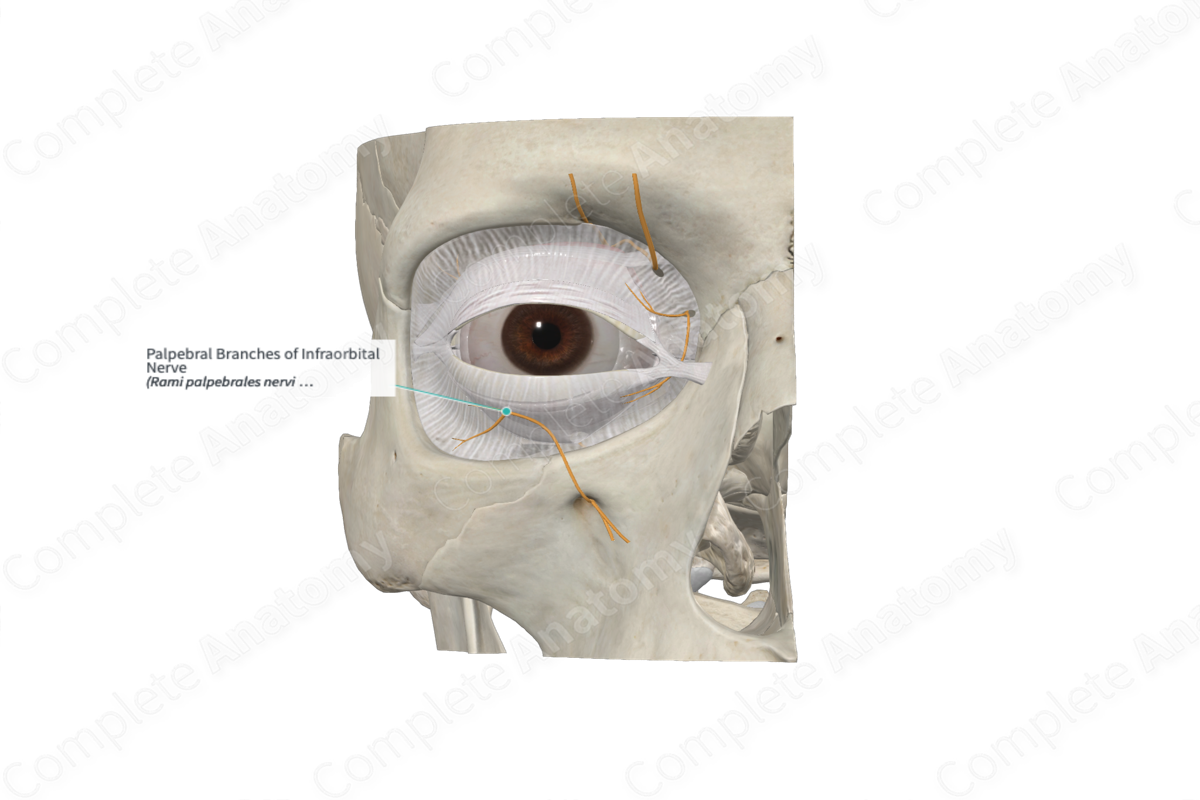
Palpebral Branches of Infraorbital Nerve
Rami palpebrales nervi infraorbitalis
Read moreQuick Facts
Origin: Infraorbital nerve.
Course: Ascend deep to the orbicularis oculi muscle to reach the lower eyelid.
Branches: None.
Supply: Conveys general sensory information from the skin and conjunctiva of the lower eyelid.
Related parts of the anatomy
Origin
The palpebral branches of the infraorbital nerve form distal to the infraorbital foramen, where the infraorbital nerve ends in its terminal branches. Its sensory fibers have cell bodies located in the trigeminal ganglion.
Course
From its origin just distal to the infraorbital foramen, the palpebral branches of the infraorbital nerve ascend on the maxilla, deep to the fibers of the orbicularis oculi muscle. They reach the lower eyelid and spread to both the external and internal surfaces.
Branches
There are no named branches.
Supplied Structures
The palpebral branches of the infraorbital nerve are sensory nerves. They convey general sense information from the skin and conjunctiva of the lower eyelid.
Learn more about this topic from other Elsevier products




